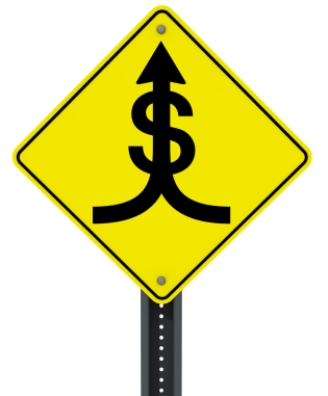Rates on the rise? Why your car insurance might be getting more expensive
Nick DiUlio
A new report on car insurance rates over the next year is a mixed bag of good news and bad news for drivers.
The bad news is rates are probably going to increase in the coming year. The good news is accident-free drivers probably have nothing to worry about.
According to a recent study by investment brokerage firm Stifel Nicolaus, car insurance rates are set to climb “at an accelerated pace” over the next 12 months, probably by 2 percent or 3 percent. In particular, the report focuses on State Farm, which reported high loss ratios (paying out more in claims than it was earning in premiums) in 2011 and 2012. 
The report indicates State Farm will need to raise rates to remain profitable, paving the way for competitors to do the same. State Farm is the largest car insurer in the U.S.
“Companies are always looking over their shoulder at other companies before making a rate increase — and State Farm just applied for a 6 percent rate increase in California. That’s going to start opening things up a little,” says insurance expert Frank Cacchione, CEO of New TNC Management Group in New Jersey.
State Farm isn’t the only insurer worth watching. According to the study, Berkshire Hathaway (the parent company of GEICO) posted 7.8 percent growth between 2011 and 2012 in car insurance policies written. Some experts anticipate that this business growth may give large insurers the confidence to begin raising rates.
“The industry as a whole has had fairly low rates for quite a long time. Now, the pendulum is swinging in the other direction,” says Dan Weedin, an insurance consultant in Seattle.
Why the rise?
While car insurers’ business has increased, so have the costs associated with insurance claims. These increased costs play a significant role in the projected rate increases.
For instance, a report authored by the independent, nonprofit Insurance Research Council found that personal injury protection claim costs per insured vehicle — including medical expenses and lost wages — rose nationwide by more than 18 percent from 2008 to 2010.
And in 2010, there was an increase, rather than a decrease, in injury liability claims for the first time since 1994. These claims cover medical treatment when passengers in your car or other cars are injured in a crash.
“Accidents are happening less frequently,” says Mike Barry, a spokesman for the nonprofit Insurance Information Institute. “But when they do happen, they are more severe and the costs are more expensive than ever before.”
Cacchione says he thinks rates are going to jump even more sharply than projected by the Stifel Nicolaus report, possibly by as much as 6 percent. Why? Because car insurance has been too cheap for too long, he says.
“The average consumer has done extremely well over the last few years because the auto insurance market has been so competitive,” Cacchione says. “Companies like GEICO and Progressive have been lowering their premiums more and more to attract business, but I think they’ve reached their limit.”
But not everyone agrees significant rate increases are on the horizon. Eli Lehrer, president of the nonprofit R Street Institute think tank, says the economy still can’t handle steep rate increases over the next year.
“Of course, rates will have to go up a little, but I have my doubts that we’re going to be seeing big increases,” Lehrer says. “The market is simply too competitive.”
The effect on consumers
Kevin Lynch, assistant professor of insurance at The American College in Pennsylvania, says it’s important for consumers to remember a few important points before worrying that their monthly premiums will inflate like a balloon.
First, insurance rate increases need to be approved by each state’s insurance commissioner. So, while one state may grant a rate increase to State Farm, a rate hike may be denied in another state.
Secondly, if an insurer raises its rates by 2 percent or 3 percent, not every policyholder will see premiums climb by 2 percent or 3 percent.
In fact, a new study by the industry-backed Insurance Information Institute says car insurance premiums are at their lowest level in almost 20 years.
According to the institute’s forecast, the average annual premium for auto insurance this year will be $839 – lower than the $842 paid by the average U.S. driver in 2004. When adjusted for inflation, the cost of car insurance is expected to be 19 percent lower in 2012 than in 2003.
Robert Hartwig, president of the Insurance Information Institute, says the drop can be attributed, in part, to improvements in assessing drivers’ risks, such as taking into account credit history, annual income, geographic location and education. Furthermore, the introduction of pay-as-you-drive programs, which let car insurers monitor your driving behavior in exchange for potential discounts, has helped drivers save money.
“Consumers have never had more options in terms of the number of insurers competing for their business, offering them an unprecedented ability to compare prices, shop and save,” Hartwig says.
Nothing to worry about?
According to Lynch, what drivers should be most concerned about are their habits behind the wheel. Your driving record and claim-filing history remain the most important factors in setting rates.
“So if you’ve got a mature, good driving record, good credit, and maybe you’re a homeowner, your rates will be so totally different from your next-door neighbor who has a bad driving record or bad credit,” Lynch says.
It’s also important for consumers to keep shopping for the best deals on car insurance.
“(Shopping around) will keep the market as competitive as possible and consumers with the lowest possible rates,” Cacchione says.
